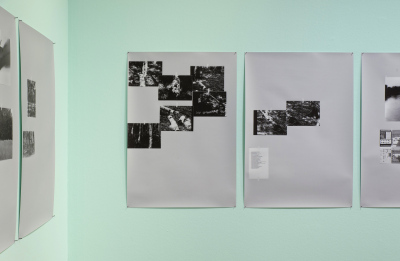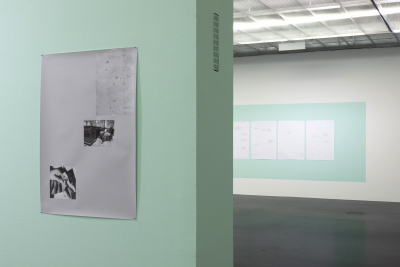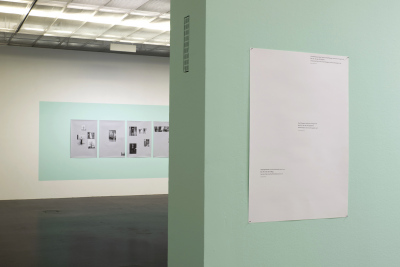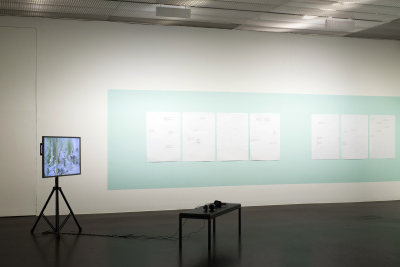-
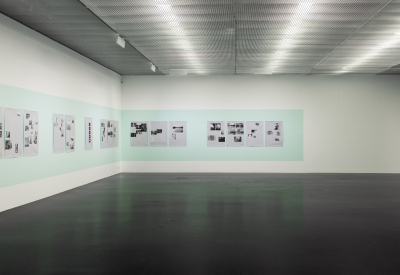
Franz Thalmair
Kunstforum International, vol. 258
Just under thirty large printed posters with images followed by just as many posters with texts presented in two rooms in the basement of the Lentos Kunstmuseum: Tatiana Lecomte’s exhibition Anschluss, a project developed especially for Linz, explores the media representation of historical events around the year 1938. For her installation of unframed tableaus printed on paper and mounted on a turquoise ground the artist did a lot of research in various archives in Linz and assembled a sequence of images which link her critique of the mode of representation of history to her own alternative model. By separating the image level spatially from the text level (in the form of explanatory captions) while hanging the works synchronously, she deprives the image material of all ascriptions and encourages us to view the image as a form of expression. […] Some of her own works are mixed in with the historical photographs. In this way, Lecomte not only forges bridges to past projects but also to other geographical zones and thematic fields. […]
The film Ein mörderischer Lärm [A Hellish Noise] (2015) is clearly the highlight of the exhibition. Here, the artist brings together Jean-Jacques Boijentin, a former inmate of the three Gusen concentration camps near Linz, and the Foley artist Julien Baissat to create a document that couldn’t be more haunting. Gusen, a subcamp of Mauthausen, was used to produce parts for the aircraft industry and survivors have reported that it was extremely loud. Lecomte explores this noise in a way similar to the method used with the tableaus by occasionally separating the spoken text, the moving image and, in this particular case, the soundtrack or by eliminating individual elements. In this way, she creates a cinematic rhythm that not only ensures that attention is always on the story being told, but also addresses the artistic form of expression, the medium of film. Together with Jean-Jacques Boijentin, the sound artist reconstructs the inmate’s memories with different tools or equipment: footsteps on the sandy soil are recreated with planks mounted on slippers; human bodies collapsing on the ground; the hammering of a metal pick on stone – “Aber schnell … eins, zwei, drei, vier, fünf …” [“Faster … one, two, three, four, five …”] – Boijentin laughs into the camera when he speaks German to assist the Foley artist with his work. Just before the end of the 21-minute film there’s a very touching moment when the former prisoner, whose father was murdered in Gusen, realises what his role is: “Honestly, I want to tell my story. Maybe it won’t matter, maybe it will. Maybe years from now people will remember and say: we once saw someone who told such and such.”
The self-reflexive shooting conveys Tatiana Lecomte’s complete mastery of filmmaking. When the protagonist not only reflects about himself, but also addresses film as a form of representation and the conventions of historiography, Lecomte steps back as the author and lets the medium speak (for itself).
(translated by Friederike Kulcsar)

